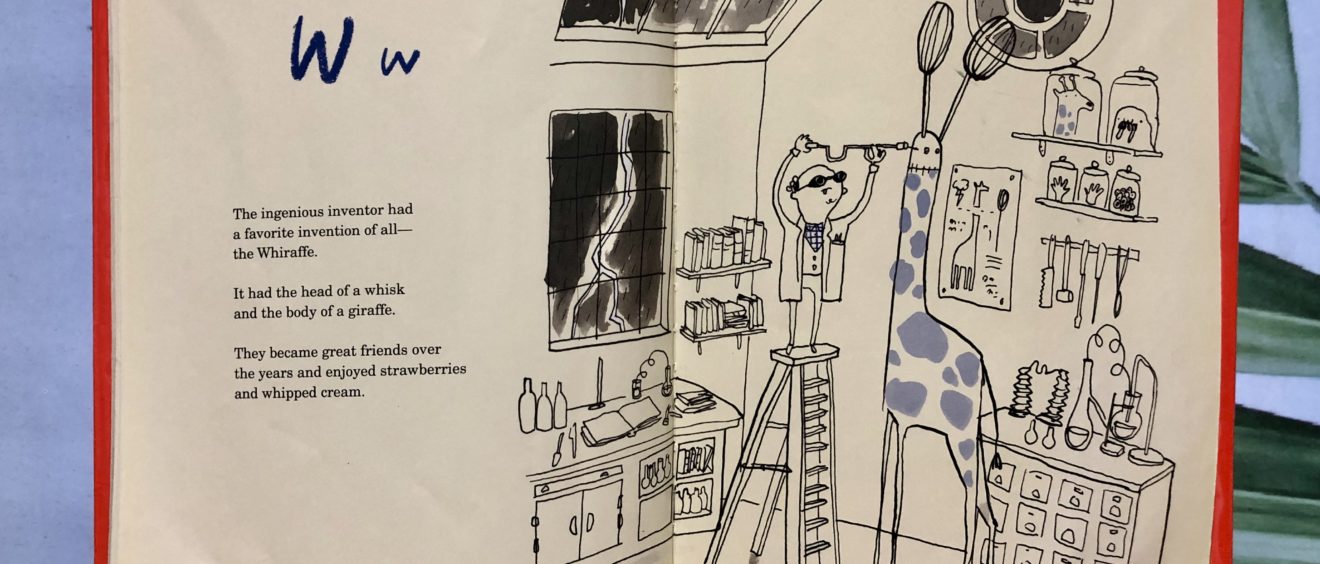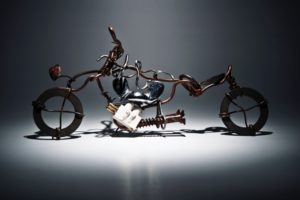It is believed that stories, made of words and words, made of letters. Once Upon an Alphabet by Oliver Jeffers depicts the concept of short stories, made of words, made of the letters and FOR all the letters.
This children’s book reminds me a lot of the quote by the famous American Poet, Muriel Rukeyser, “The universe is made of stories, not of atoms.” this book is indeed a quirky and curious alphabet book for children (and adults) that consists of short tales of experiences from each letter, from A to Z. Do not expect the cliche of “A is for apple” kind of description or fable!
The way the stories are presented is so BRILLIANT for some reasons:
#1 The Diverse Protagonists
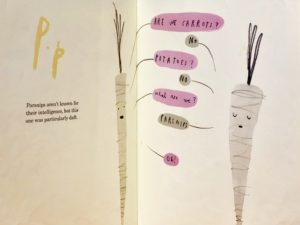
There are so many different protagonists introduced on each page of this book, each with their own peculiarities. It covers protagonists with different occupations, from the Astronaut to the guard to the king to the lumberjack, as well as the inventors and the nun.
An object can be a protagonist too, such as the cup, the robot, the typewriter, the parsnip and the cucumber.
Some animals including the octopus, the owl, the monkey and the yak who are facing their own “issues”.
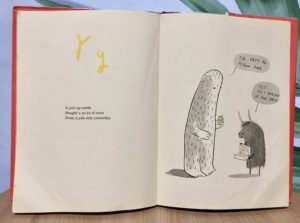
There is a splash of creativity too as Whiraffe (mixture of a whisk and a giraffe) and yeti (folkloric ape-like creature) get a part to be protagonists too in this book.
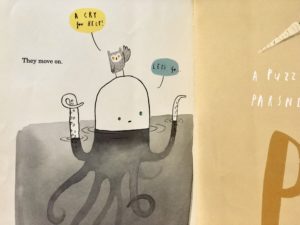
My favourite is the detective duo of Octopus and Owl who love searching for problems to solve.
#2 Whimsical Stories
How amusing it is if we can really find a door made of jelly for the fear of us forgetting to bring the key?
Imagine a regular cucumber who aspires to be a sea cucumber with its own struggles or staying in a house which was halved by the lightning.

What about a story of two guys by the name of Bernard and Bob who are constantly feuding and when Bob decided to burn the bridge, he did it from the wrong side?

All the stories are indeed short and simple but inventive.
#3 Some Stories are Related and Presented with a Twist
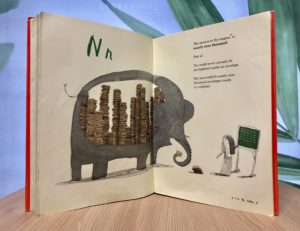
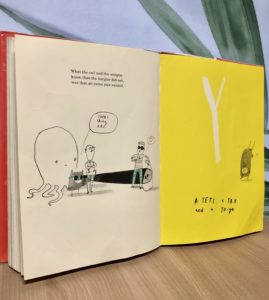
A guy named Edmund who is an astronaut whose fear of heights makes his high-flying profession a struggle, there is a revelation for him at the end of the book. His story does not finish on the letter ‘A’ part only.
Let some characters surprise you on other parts of the book, when they show up again to help the protagonist on that particular letter’s story or simply be the “extras” in the story.
#4 Words Which are Uncommonly Used in Children’s Book

How many times do we find the words ‘enigma’,’vanquished’, ‘molecule’, ‘incognito’, ‘yeti’, ‘sea cucumber’, ‘rusty robot’ or ‘ingenious’ in children story book?
#5 The illustrations
Most importantly, the illustrations in this story book are so “Jeffers”, handsome and catchy!
Hope you and your child find a joy in reading this book too. Check our our next children’s book recommendation, Angelica Sprocket’s Pockets by Quentin Blake.
Happy reading,
Capella Preschool Team

